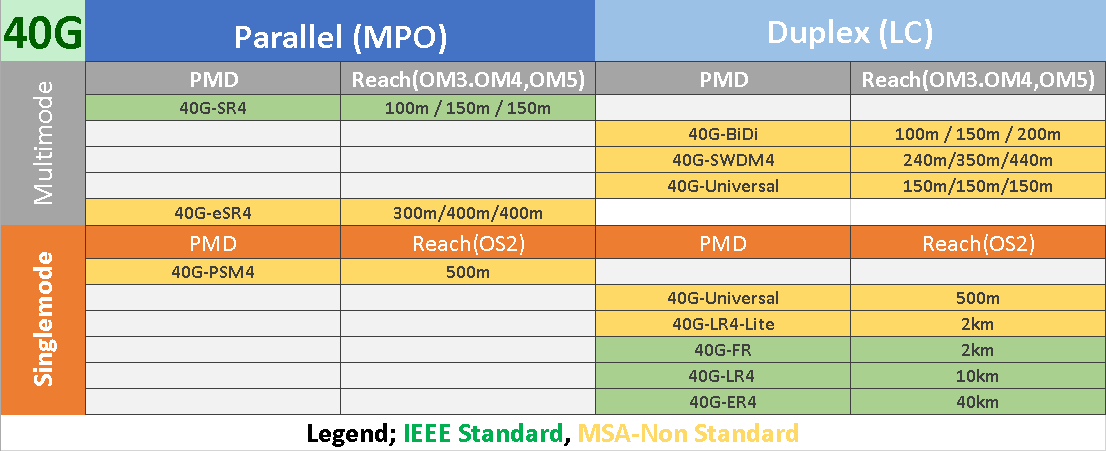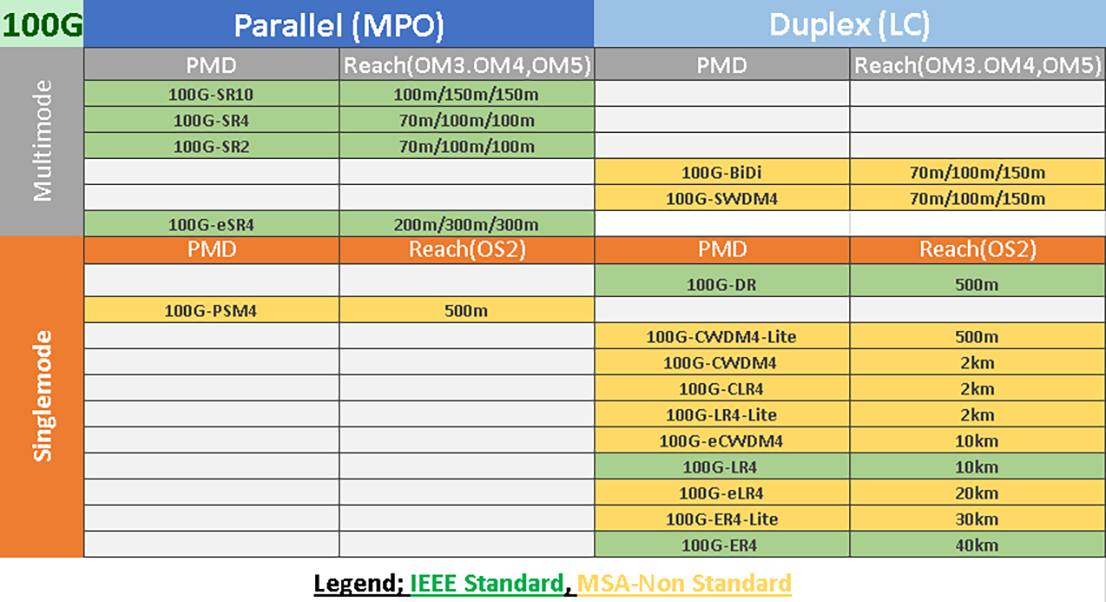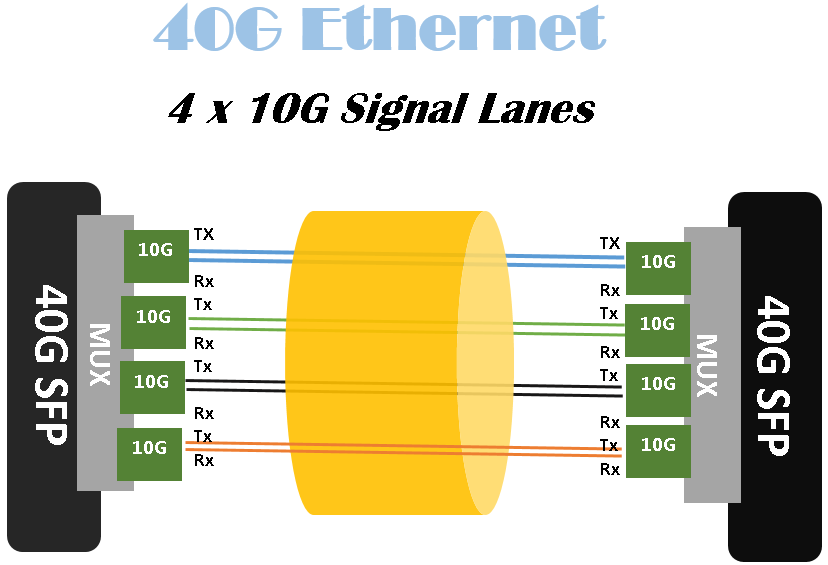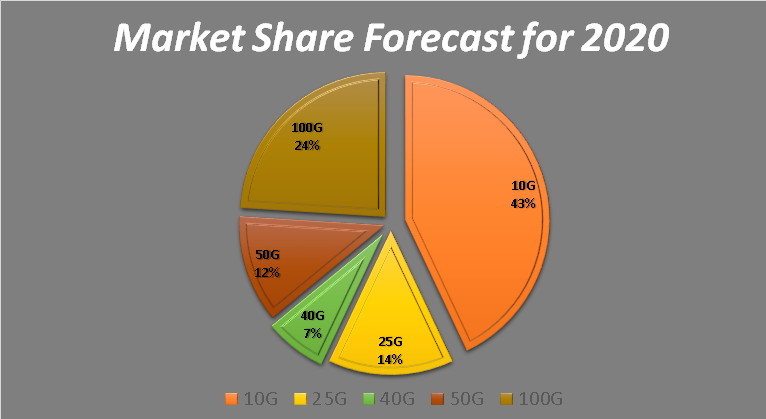Internet giants including Microsoft, Google, Facebook, and Amazon started migration toward 100G back in 2015 – a trend smaller data centers have started following. Generally speaking, Singlemode fiber is preferred in 100G deployments as it is more suitable for hyperscale data center applications. As shown in the following image; In Singlemode Fiber, light travels through one path only. Whereas, multiple paths are utilized in Multimode Fiber. Both of these options are practical for 40G and 100G applications – each one with its pros and cons.


Optical Transceivers Comparison: 40G vs. 100G
Both the 40G and 100G type transceivers available in the market have been designed and optimized for their applications and designated reach. In the following comparison; we are going to provide our readers with a broad picture of deployable 40G and 100G options.


Why 40G is Costlier?
The primary issue with the 40G Ethernet is its operating mechanism where 4 x 10G signaling lanes are used. In this option, 4 pairs at 10G each is used on UTP. Each of the 40G SFP modules comes equipped with a silicon chip for multiplexing – something similar to CWDM in fiber. When you buy a QSFP or 40G cable, you pay for the software, chip plus lasers, etc. The following figure shows the operating mechanism of 40G.
On the other hand, in 25G, 50G or 100G 25 gigabits per second is offered. 2 x 25 G signaling lines are used in 50G, and 4 x 25G signaling lines are used in 100G. Thus, 100G can be considered as a more cost-effective solution especially in high-density applications.

40G as a “Transiting” Medium
Upgrading to tetra-bit Ethernet (100G) is a costly affair. Many users with lower density tier 2 and tier 3 datacenters and smaller budgets can consider capitalizing the 40G architecture. Here, it is essential to understand that the 40G supports preexisting, 10G ports based legacy infrastructure. Later, the 40G/100G switch configurability will ensure an accelerated and less-expensive upgradation to tetra-bit, 100G Ethernet.
Planning a 40G or 100G Migration? – Remember these things!
Here are a few facts you should know while weighing 40G Vs. 100G and concluding which one of them is more feasible for your organizations:
- Switches with 40G (4x 10G) QSFP+ ports or 10G SFP+ ports can be used for 10G server uplinks
- Switches with 100G (4x 25G) QSFP28 ports or 25G SFP28 ports can be used for 25G server uplinks
- Most analysts are forecasting a steep decline in 10G and a steep growth in 100G deployment. Following is a forecast from Mellanox
- 100G switches are widely used in cloud data centers as the cost difference between 100G, and 40G switches are small
- Most modern 100G transceivers are designed to support 40G operation
- Some Singlemode, non-standard 100G transceivers are designed to be used in cloud data center application and deployment only
- According to a research done by Dell`Oro, in coming years 100G switch port sales will surpass 40G switch port sales

Conclusion
- Upgradation from 10G to 40G or 100G is the need of time
- 40G is a viable solution available for small to medium enterprises
- 100G (& beyond) is going to dominate the market share in near-future
 English
English
 Deutsch
Deutsch
 Espaniol
Espaniol










